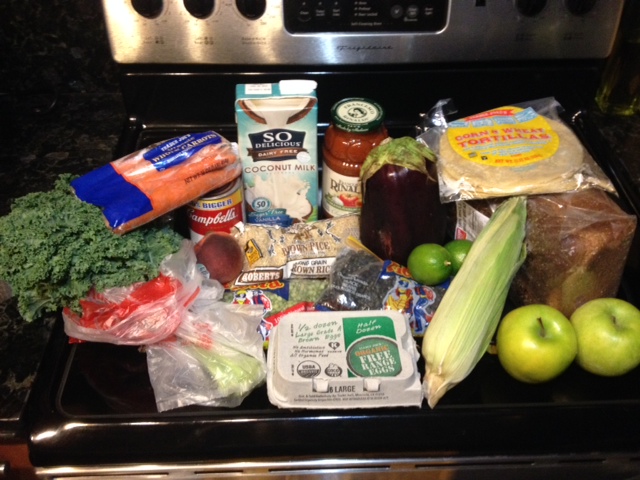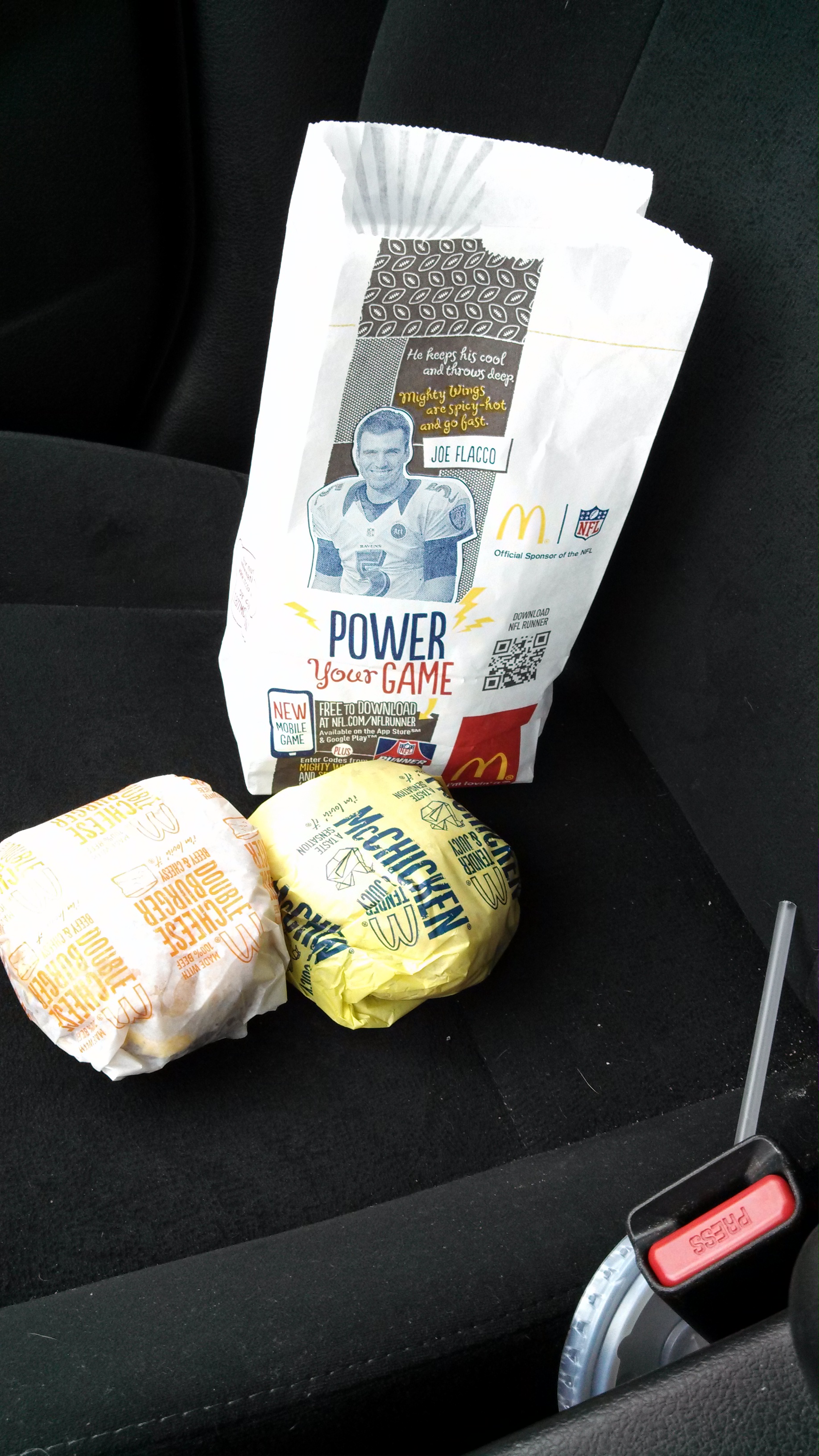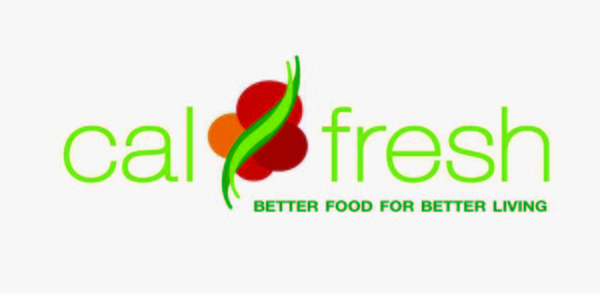Living on $4.38/day: Day 1 – Eating slowly
/The above image came from this fascinating brief history of the food stamp program. A few years ago I was moved by the idea that I could help create awareness among my circles about hunger issues through this thing called the CalFresh Challenge. You have to live off $4.38 per day, which is the amount a single adult receives in the food stamp program in California. The last time I did it, I wrote about many of the things that people don’t understand, like why businesses and poor people both lose if you over regulate what items are included, how this started out as a Republican/Bi-partisan ideal to help the very poor, and even simple things like eligibility criteria. Today is day one, here’s how it went. The day before we started (a Sunday), my wife and I planned our meals for the week, went shopping, and then itemized the costs of everything. The first really shocking thing was that our initial meal plan came out to about $84 – or $23 more than we would receive if we were getting food stamps. Figuring out how to shave over $20 off an already sparse meal plan was pretty tough. We cut about $15 and are sitting tight for now to see what else can be trimmed.
Another thing to notice is that the amount of money available in food stamps has actually gone down for recipients by over 10% since 2012. An $8/week reduction may not seem like much to most people, but it made the process that much more challenging. On top of the reduction in food benefit, the actual costs of the food (and likely everything else one has to pay for) has gone up. We made a couple of the same items as last time and you can see the price per serving is higher this year. So, there’s that.
Peanut Butter Puffins
As for the food, it was a pretty tame first day. I started with these. A reasonably priced item at .55 cents per serving including organic fancy pants 2% milk. When I got to work I immediately went for some hot tea. I think I’ll be staving off hunger with water and tea. I have an office job, so it’s easy to get some hot water and technically the coffee is available at no charge. I am passing on coffee this week because I can’t afford it.
Lunch was an oldie but goodie, split pea soup! Here’s what I wrote about it – and its incredible nutritional value – last time (link).
Healthy & filling split pea soup
This is a great dish if you are trying to stretch dollars. It is a $1.33/serving (compared to $1.08 in 2012), which is a little high for lunch, but worth it. The pale, slimy green appearance probably would turn kids off, but it tastes good and is super nutritious. You need a microwave to make it work, but other than that it’s a pretty easy choice. It occurs to me that if I had an outside job, like on a construction or landscaping gig, I’d probably have to make different choices about my lunch just due to the lack of a kitchen. I’ll be interested to hear other stories of what is possible from others who either do this challenge or just live their lives with this budgetary constraint.
I read on one of my favorite news sites how according to the author doing this type of thing is a stunt. To be sure, some politicians and others do this so they can play gotcha games with the other side. Former California Republican gubernatorial candidate Neal Kashkari kind of set the gold standard for trolling with his pretending to be homeless for a week. The sad part is, had he just focused on sharing the lessons that such harsh conditions teach us, it could have been a really useful thing. His effort probably was a stunt. But there’s a danger in minimizing efforts to call attention to the challenges that being poor or nearly poor brings. Most people won’t know and don’t generally have time to really understand what it’s like to have to stretch your money because you only have $4/day to eat with. This is an opportunity to help get more information to people. And, hopefully, more empathy. Using someone’s dire circumstances to score cheap political points is a bad idea. But let’s not throw the baby out with the bathwater. I guarantee no one I speak to this week will know that while food prices went up, the amount available to live off went down.
On another front, the people in my office are really decent human beings. And they love to share their baking skills with everyone else. In fact, I went in to fetch some hunger-masking ice cold water from the break room and found this.
I hear it was delicious. I had to skip it to stay on the path of this challenge. Truth be told, if your place of employment serves food you probably augment your personal food supply with at least one meal this way. I recently learned from an uncle that my grandmother stretched their very limited food supplies in Little Rock in the ’50s by bringing home the leftovers she prepared as a cook for her wealthy employers. Nevertheless, I get the idea of trying to be true to the spirit of the campaign, so I passed on this lovely looking cake.
It’s amazing how much more slowly you eat when you know the next meal is eight hours away and you don’t have money to just grab a quick pick-me-up. I’m only one day into this thing and am already remembering one of the things that I think is really most important. The experience of hunger shapes how you handle other things. It’s like going on a long walk with a mild ankle injury. You can get the job done, but there isn’t a point where you don’t notice that something’s not right.
Turning to dinner, we had this
These “taco” lettuce wraps were only $3.44/serving and they were delicious. A couple things. First, as a native San Diegan whose first food love is Mexican food, I know the idea of calling anything without a tortilla a taco is sacrilege. But when your motivation is partially to convince yourself that something isn’t as odd as it seems a little suspended disbelief never hurt anyone. Second, they actually were good and I didn’t miss the tortilla. I’m not just making the best of it, I was really surprised to find this to be true. Not sure if I could permanently leave the warm goodness of the Pancho Villa tortilla forever, but the occasional substitute may be good for the wallet and the waist.
Day One unfolded as mostly a success. I shared the story with a few work colleagues, so am raising a little awareness, and I’m ready to tackle day two. We had three healthy meals all for about $5.32 each. Yes, we blew our daily budget on the first day by .94 cents (over 20%), but we wanted to get started on the right foot and will look to make that up later in the week.
I think I reached at least five new people in person with the story. In fact, one friend of mine even recommended giving the difference between my weekly grocery budget and what we’re spending on this challenge to the Hunger Coalition. I’m going to discuss this with my wife, but it’s an interesting idea. Our weekly grocery budget is about $125, but some of that is the prorated cost of things like paper towels and lotion. Technically we could have a separate category for these things, but at some point you get too granular and budgets stop having meaning. But anyway let’s assume our food consumption budget is about $100/month. That’d be only about $40 worth of donation. What’s perhaps most shocking is how much of a difference that amount of money makes on what you can eat. My theory is that if we downshifted on ingredient quality we could probably knock off another $10-15. I like paying more for hormone-free this or humanely raised that, but I hope people who get self-righteous about this type of thing realize what a luxury that actually is. I suspect most of the world – and over 400,000 San Diegans – simply don’t have the good fortune to be so picky. Maybe it points to larger problems with our food system. Well, food for thought, I guess (yes, yes that was a terrible and initially unintended pun). Thanks for reading
Blog entry by Omar Passons. To read more about his journey, you can check out eat.drink.give.go.
























